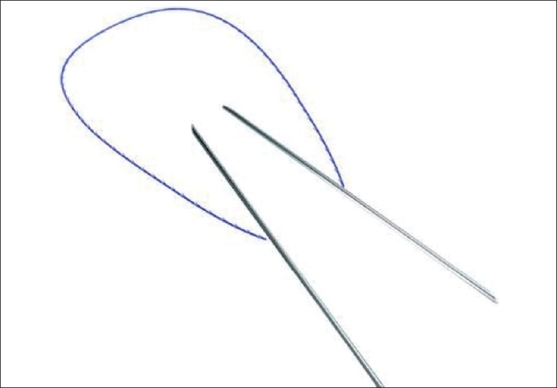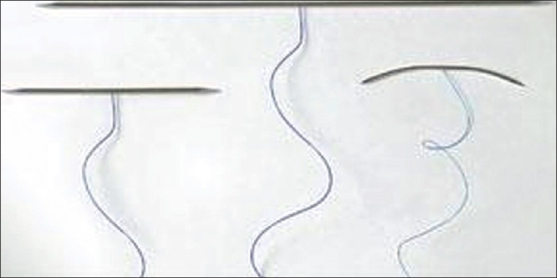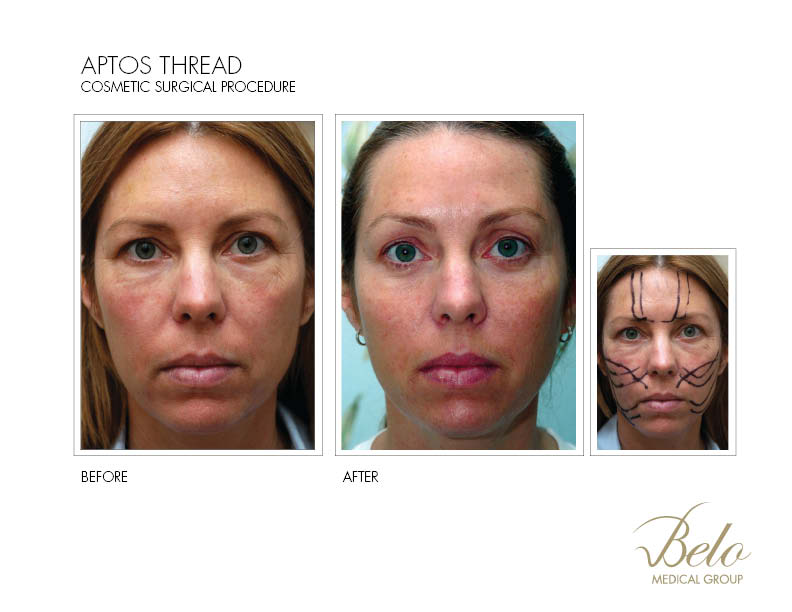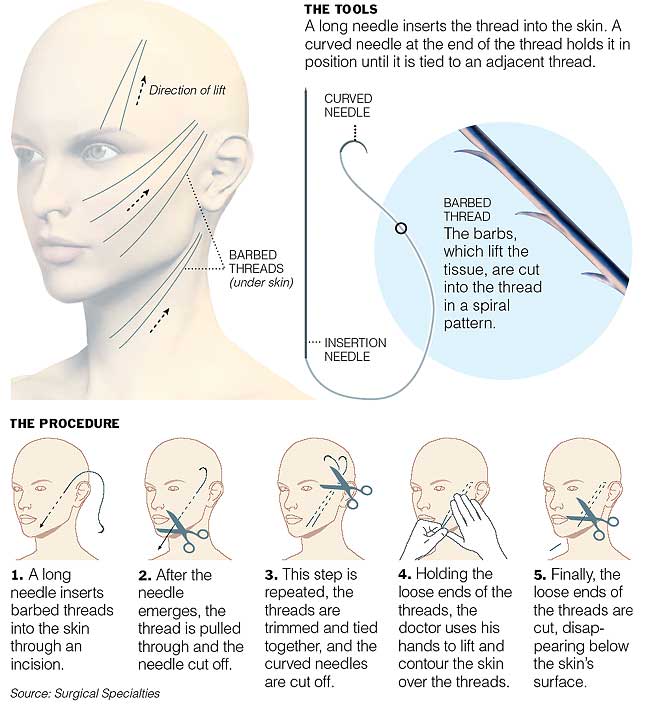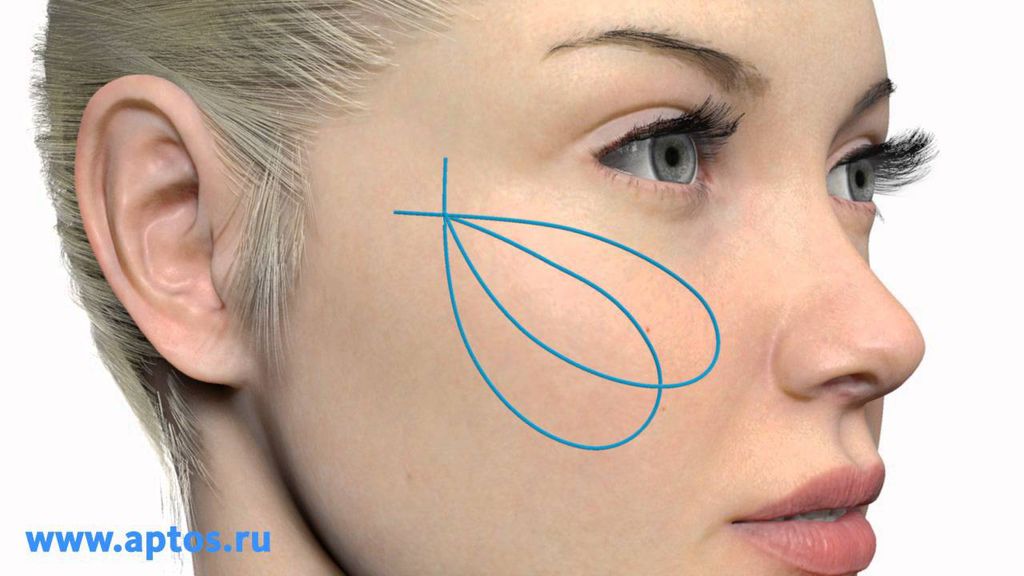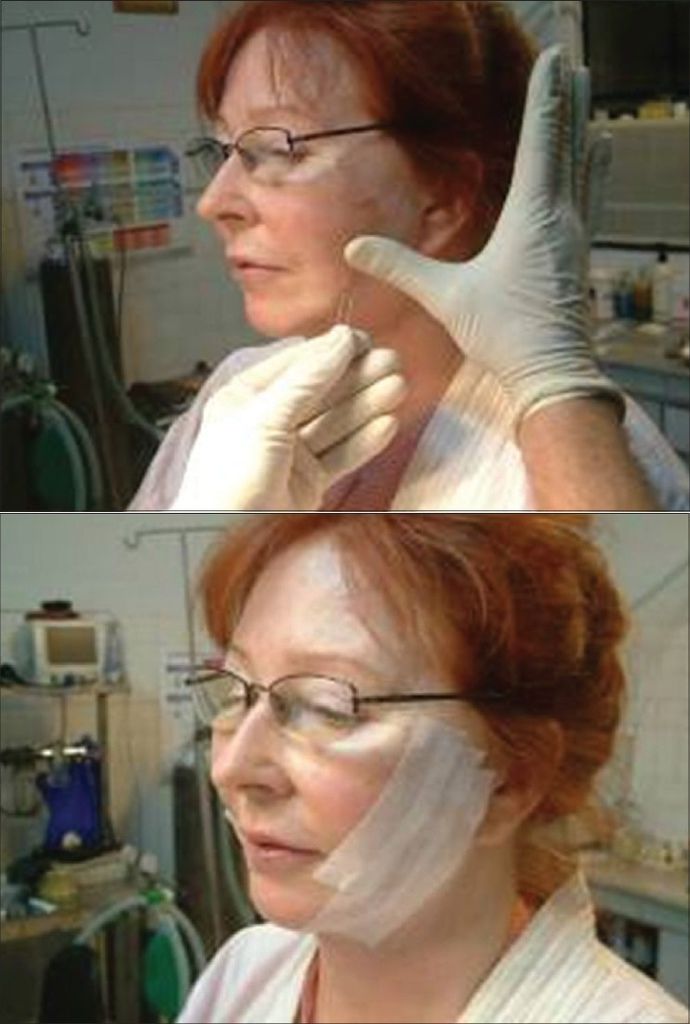



Facial lifting with Aptos methods(5)
Factors Which Determine the Outcome of Success in Threadlift
These various developments and the resultant experience have lead to elucidation of certain principles which determine the outcome of success in thread lifting. [4],[5]
These factors are:
1、Correct understanding of the Aptos lifting concept
2、Knowledge of topographic anatomy, especially anatomy of face
3、Consideration of the facial muscles kinetics
4、Knowledge of the pathogenesis of ageing and ptosis of soft tissues and
5、Correct determination of indications.
These factors are now further described in detail.
Correct understanding of the aptos thread concept
Prominences on threads are located in every 0.5 mm and each of them is responsible for its own tissue area. Number of prominences on each thread is about 20. This is why Aptos lifting is even and uniform along the line. This is the major difference of Aptos from classical and endoscopic lifting methods, where mobilized tissues(Skin, Subcutaneous Muscle Aponeurosis「SMAS」)are lifted and hung only to points fixed by stitches.
Knowledge of topographic anatomy
It is known that facial and cervical layers of soft tissues can be shifted relative to each other, but only in specific and different blocks and areas. For instance, it is easy to shift skin of lateral areas of the forehead, eyebrow tail, mental area, cheek and malar areas. At the same time, any attempt to shift tissues of the posterior area of the face above the malar bone and its arch perimeter is difficult since in this area the skin is closely tied to the periosteum.
Consideration of the facial muscles kinetics
It is not advisable to lift soft tissues in the active muscle area, especially vectorially; it would counteract the muscle work. Such areas need elastic lifting by Aptos Springs as outlined above.
Knowledge of the pathogenesis of facial ageing
It is well-known that soft tissues ptosis is of a focal nature; some areas sag more than others. Some areas are resistant to sagging as they are held up by bundles(raper points)of connective tissues, vessels and nerves. Therefore, it is logical to lift in places, where these anatomic formations do not create any impediments.
Correct determination of indications
The same methods shall not be advised to all and everybody. It is important to assess the suitability of different aesthetic techniques and then recommend the most suitable method or combination of methods applicable in a specific patient.
Choosing the Appropriate Method in Different Areas[1]
The different methods for face lifting for different indications are as follows:
For eyebrows
Aptos Thread method for mild light lifting
Aptos Thread 2G method for more stable lifting
For cheekbone areas
Aptos Thread method for mild lifting, elimination of plaintive furrow and creation of high volume
Aptos thread 2G method for more stable lifting
Aptos Needle method for additional stable lifting, elimination of plaintive furrow and creation of high volume
Aptos Needle 2G method for additional stable lifting, elimination of plaintive furrow and creation of high volume
For marionette lines:Aptos Spring method
For mental areas
Aptos Thread method(light lifting),
Aptos Thread 2G method(more stable lifting),
Aptos Needle 2G method(additional stable lifting).
For sub-maxillary areas
Aptos Needle method,
Aptos Needle 2G method
Side Effects[4]
While threadlift is a relatively safe method, side effects can occur, particularly if all points described are not given proper consideration.
The possible side effects which are specific to threadlift include:
1、breach of threads due to unilateral weakening of prominences;
2、abruption of threads to the skin surface, their migration;
3、asymmetry, hyper-correction, thread visualization;[Figure 8]
4、linear haemorrhage along the thread;
5、retraction of the skin in entry and exit points of needles and;
6、short-term(up to 3 months)and unstable results.
In addition, other infrequent complications which may occur include inflammation of surrounding tissue, suppuration, damage to the parotid duct [Figure 9], branches of the facial nerve and regional nerve and vessels.
Results of Aptos are shown in [Figure 10],[Figure 11].
Figure 8. Exposure of the thread
Figure 9. Breach of the ductus parotideus
Figure 10. (A) Before Aptos, (B) After Aptos
Figure 11. (A) Before Aptos, (B) After Aptos
Conclusions
Threadlift, as an anti-ageing procedure is gaining more popularity as it is a simple, minimally invasive procedure that can be done with local infiltrative anesthesia. Short healing time, reliable and long lasting effects and the possibility of combining with other aesthetic procedures such as Botox® , fillers, lasers, peels and liposuction are added advantages.
However, it should also be emphasized that threadlift is a relatively new procedure and like all new procedures, it requires further study and development, for proper evaluation.
References
1. Sulamanidze M, Shiffman, Paikidze T, Sulamanidze G. Facial lifting with APTOS Threads. International Journal of Cosmetic Surgery and Aesthetic Dermatology 2001;3:275-281.
2. Sulamanidze M, Sulamanidze G. Lifting of soft tissues: old philosophy, new approach - a method of internal stitching (Aptos needle). Journal of the Japan Society of Aesthetic Surgery 2005;42:182.
3. Sulamanidze M, Sulamanidze G. APTOS SPRING - a new concept of lifting. Journal of the Japan Society of Aesthetic Surgery 2005;42:183.
4. Sulamanidze M.A., Fournier P.F., Paikidze T.G., Sulamanidze G.M. Removal of facial soft tissue ptosis with special threads, Dermatology Surgery 2002;28:367-371.
5. Adamyan A, Skuba N, Sulamanidze M, Khusnutdinova Z. Morphological foundations of facelift using APTOS filaments, Annals of Plastic Reconstructive and Aesthetic Surgery, 2002;3:19-27.












